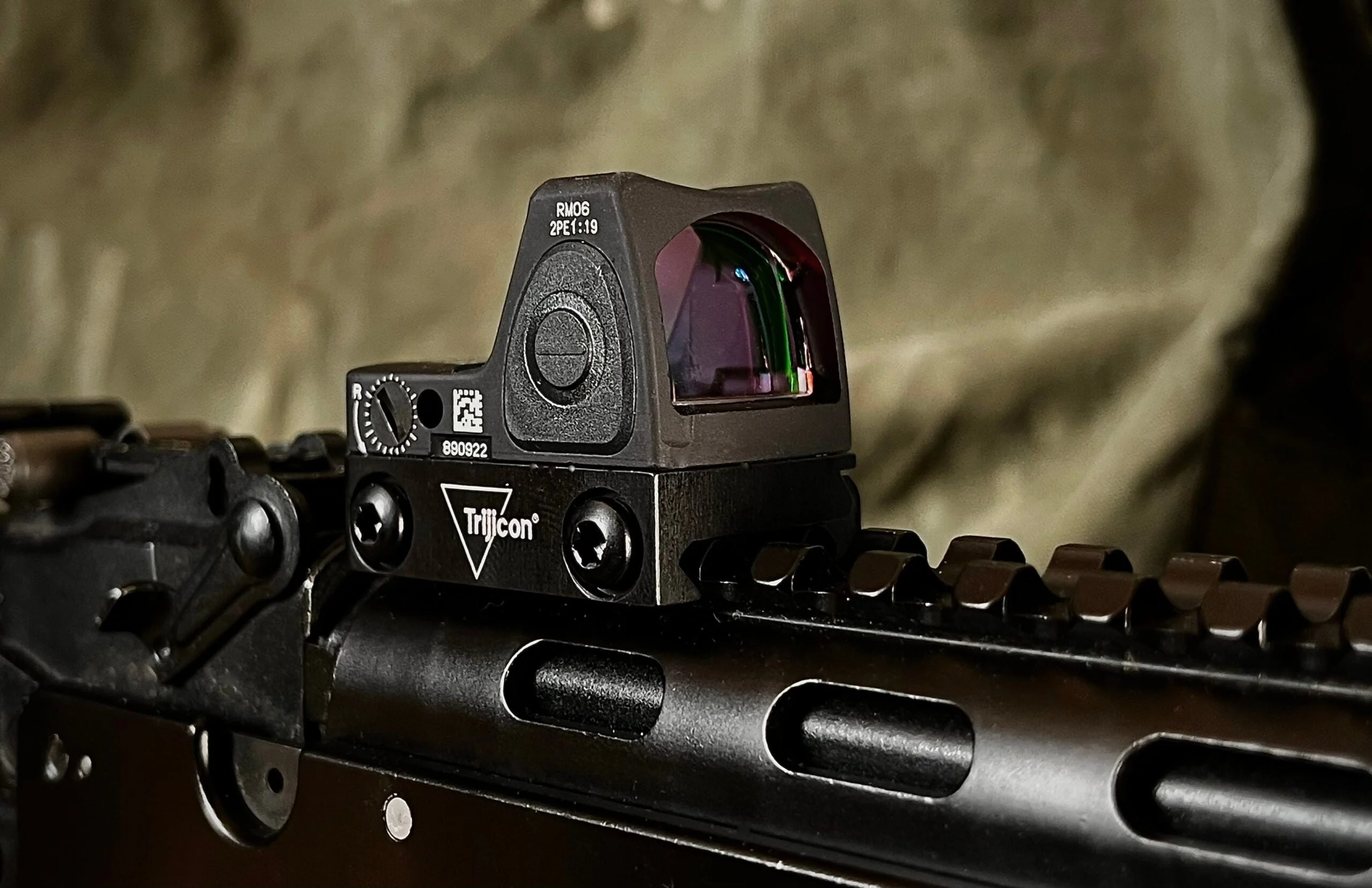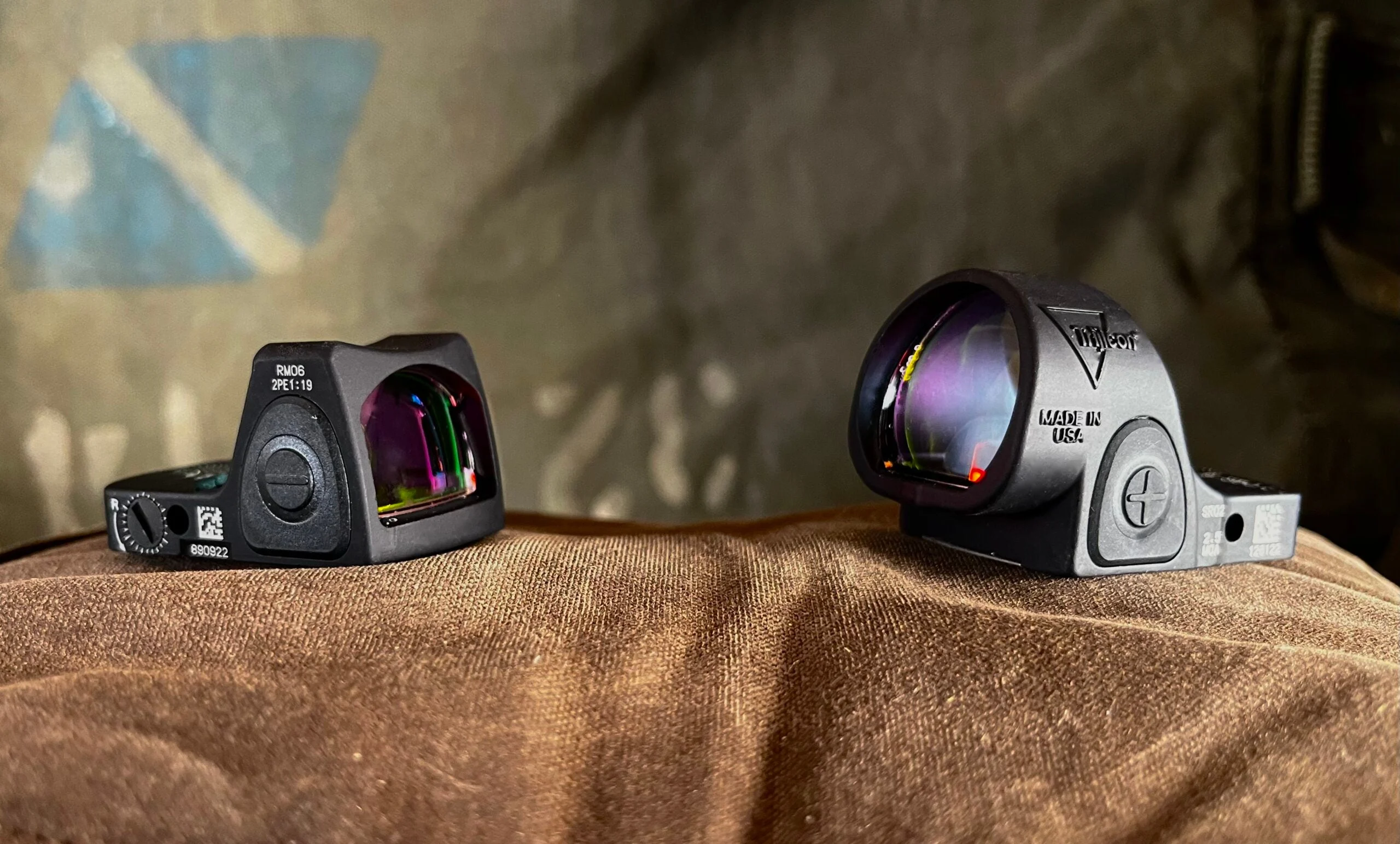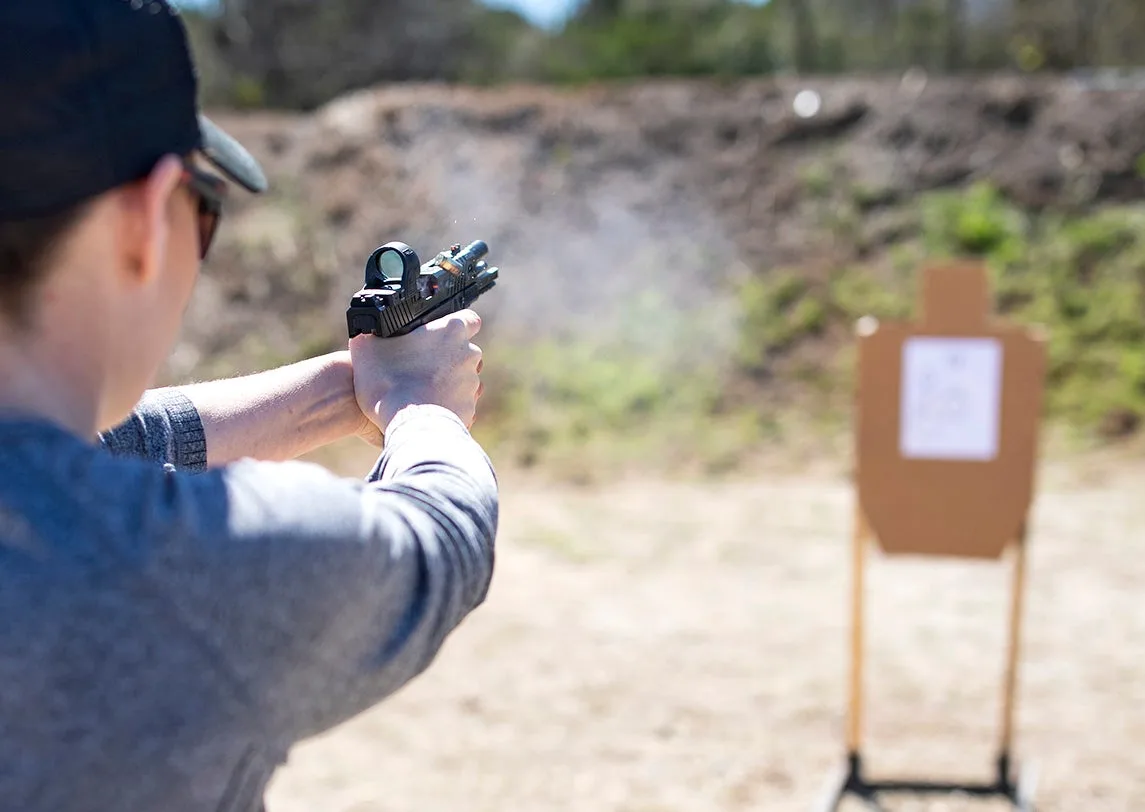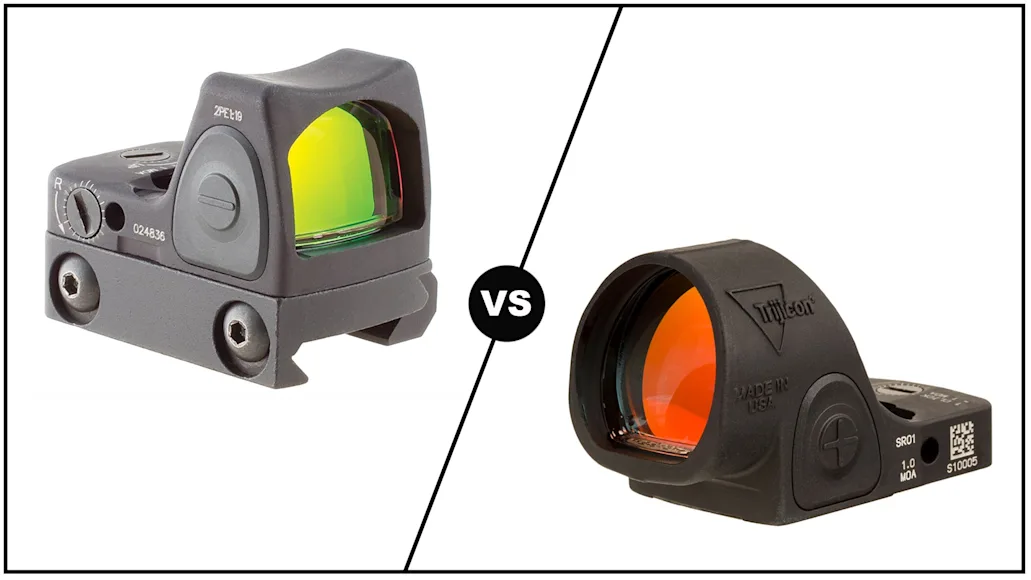_We may earn revenue from the products available on this page and participate in affiliate programs. Learn more ›
_
If you’re about to drop a significant portion of your paycheck on one of those tiny red-dot sights
, you’re probably weighing a couple options from Trijicon—and I bet you’re down to the RMR vs SRO. They’re not cheap, but what all of that money buys you in both optics is real-world-tested technology, which is a good thing if you’re shooting a pistol for competition or backcountry self-defense or carrying a turkey gun
through the woods. But which one of these sights is better for you? To help you make the right choice, we are going to break down the differences between the two and their pros and cons for different applications. But first, let’s get into the RMR and SRO individually and each does best.
RMR vs SRO: Trijicon RMR Overview

A Trijicon RMR red-dot sight mounted to a Picatinny rail on a Modern Sporting Rifle. Matthew Every
Specs
Weight: 1.2 ounces
Dot size: 1.0, 3.25, or 6.5 MOA
Illumination: CR2032 battery-powered LED or fiber optic/tritium
Waterproof Rating: 20 meters
Battery Life: 4 years
Price: $742-$795
Pros
Extremely rugged
Low profile
Non-battery-powered version available
Cons
Smaller window
Need to remove the sight to change batteries
RMR stands for Ruggedized Miniature Reflex sight, and it is indeed rugged. The geometry of the sight’s housing (specifically the two lumps on the top) gives it more strength. USSOCOM
tested the sight extensively for harsh environments, and it’s now issued to some troops as a backup optic on rifles and a primary optic on handguns.
Trijicon offers two versions of the RMR, one with fiber-optic and tritium illumination
that doesn’t need batteries and an LED-illuminated version
powered by batteries. Both are waterproof, can withstand extremely cold temperatures, and put up with impact should you drop your gun. They are also resistant to vibration.
RMR vs SRO: Trijicon SRO Overview

A Trijicon SRO red-dot sight mounted on the same Rifle. Matthew Every
Specs
Weight: 1.6 ounces
Dot size: 1.0, 2.5, or 5.0 MOA
Illumination: CR2032 battery-powered LED
Waterproof Rating: 10 Meters
Battery Life: 3 years
Price: $783
Pros
Large window makes it easy to shoot
Easy to change batteries
Auto and manual brightness options
Cons
Only available in a battery-powered version
Large housing
Difficult to co-witness with iron sights
The SRO or Specialized Reflex Optic
is designed for quick target acquisition and fast shooting. It has the same footprint as the RMR, with a bigger window and a larger housing. SROs can be configured for manual and automatic LED brightness settings in the same optic. With the RMR, you’ll have to pick a model with either automatic or manual brightness adjustments.
The SRO is one of the most user-friendly red-dot sights from Trijicon. There is no batteryless version of the SRO, but unlike the RMR, its battery can be changed from the top of the optic. Its large window is also easy to use. Shooters typically have an easy time finding the dot on the optic and keeping it on target.
RMR vs SRO Comparison

The RMR (left) is slightly more durable and is better for co-witnessing with iron sights; the SRO has a bigger window, which make it easier to get on target quickly. Matthew Every
So which one is better? The thing about the RMR vs SRO is that you’re really comparing two different kinds of optics best suited for different roles. That said, here are four key things to consider.
Price and Availability
When it comes to price, they’re about the same. Street prices hover just around $600, and you can find either the RMR or SRO for just under that. As of this writing, RMRs are more readily available than SROs. That said, you can probably find an SRO on the internet before you’re done reading this article.
User Friendliness
One of the biggest differences between these to optics is in the battery changing department. If you don’t want to re-zero and re-torque the screws on your optic every time you change the battery, you’ll want an SRO. That said, the battery life on both optics is around three years, so you won’t have to do that often. Also, you could buy an RMR that doesn’t need a battery. The SRO also has both automatic and manual illumination is the same optic, whereas the RMR is only available in automatic or manual options separately.
Shooting Experience

Competition handgun shooters tend to like the SRO because of its big window. Trijicon
With its bigger window, the SRO also has an edge in visibility. Newer shooters will have an easier time shooting the SRO. But that visibility comes at a slight price. The SRO is less durable relative to the RMR. However, the SRO is still a very durable sight.
Co-Witnessing
Users find co-witnessing (setting the red dot up in conjunction with iron sights) with the SRO more difficult. With its low-profile, the RMR is perfect for co-witnessing your optic with iron sights. This is important to some shooters because if your optic stops working, you’ll still have the irons.
RMR vs SRO: The Bottom Line
Trijicon makes both of these sights at around the same price point for different shooters. RMRs are more rugged, there is a batteryless option, and it can be co-witnessed with irons. This all points to a good concealed carry optic or an optic for someone who needs it to work because their life depends on it.
The SRO is more for competitive shooters looking for speed. SROs are easier to shoot fast and easier for shooters with less experience with red dots to run. But that doesn’t mean it isn’t a good carry or hunting optic. While it is less rugged than the RMR, it’s more rugged than some other sights on the market. And last time I checked, I’ve never needed to bail out of a helicopter to hunt turkeys or shoot steel targets.


